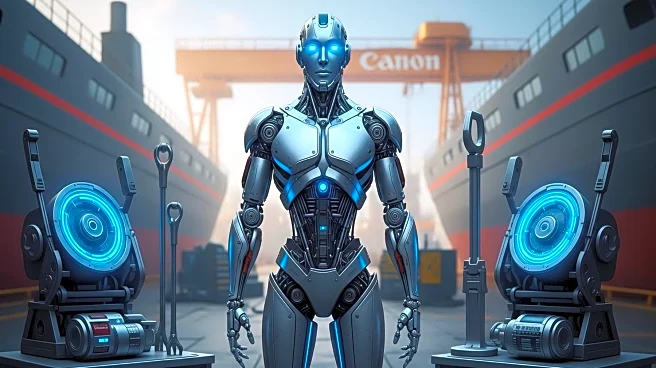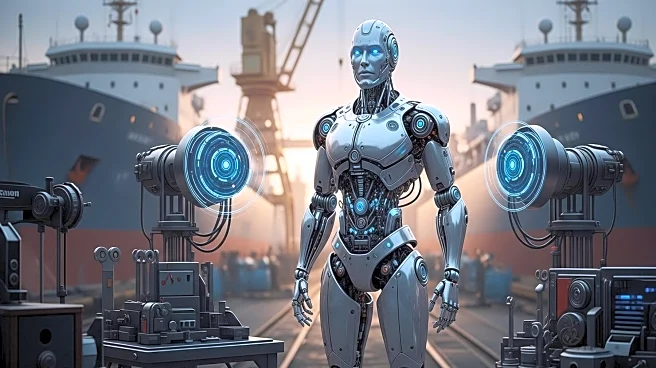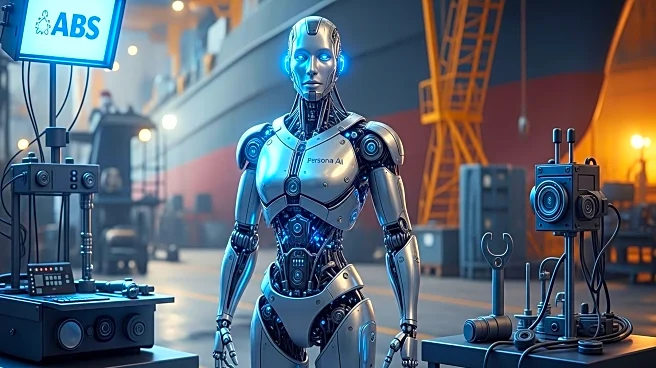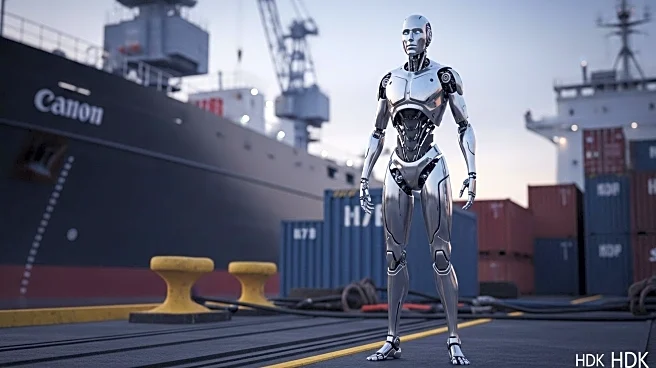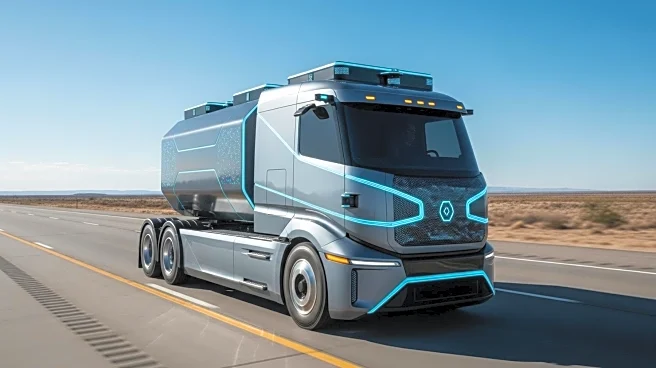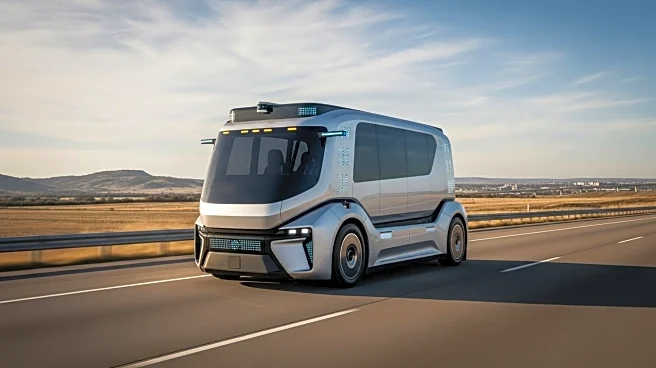What is the story about?
What's Happening?
Houston-based class society ABS has announced a collaboration with robotics company Persona AI to develop a humanoid robot for shipyard applications. This initiative aims to utilize robotically-collected data for classification during ship construction, facilitating remote survey techniques. The collaboration marks a significant step in integrating humanoid robotics into the shipbuilding industry, which traditionally relies on repeatable tasks like CNC cutting and robotic panel welding. The humanoid robot is designed to navigate complex shipyard environments, where workspaces and staging areas are constantly changing. This development is part of a broader trend in Korea, where automation is increasingly integrated into industrial environments. HD Hyundai Samho is also working with Neura's 4NE1, a German-made humanoid robot, to address labor shortages in industrial settings.
Why It's Important?
The introduction of humanoid robots in shipyards represents a transformative shift in the maritime industry, potentially increasing efficiency and reducing reliance on human labor for repetitive tasks. This could lead to cost savings and improved safety, as robots can perform hazardous tasks without risk to human workers. The collaboration between ABS and Persona AI highlights the growing acceptance of robotics in industrial applications, paving the way for new standards in data collection and classification. As automation becomes more prevalent, industries may experience a shift in workforce dynamics, with a greater emphasis on technical skills to manage and maintain robotic systems.
What's Next?
ABS plans to conduct trials to develop new class standards for data collected by robots, which could lead to broader adoption of humanoid robotics in shipbuilding. The first prototypes of humanoid welding robots, developed by HD KSOE in partnership with Vazil Company and Persona AI, are expected by the end of 2026, with field testing and commercial deployment planned for 2027. These developments may prompt other shipyards to explore similar technologies, potentially leading to widespread changes in shipyard operations and labor practices.
Beyond the Headlines
The integration of humanoid robots into shipyards raises ethical and cultural questions about the future of work and the role of human labor in industrial settings. As robots take on more tasks traditionally performed by humans, there may be concerns about job displacement and the need for retraining workers to adapt to new technologies. Additionally, the use of robots in dynamic environments like shipyards challenges existing safety and operational protocols, necessitating new standards and regulations to ensure safe and effective deployment.
AI Generated Content
Do you find this article useful?
